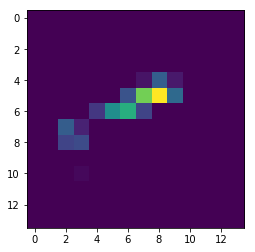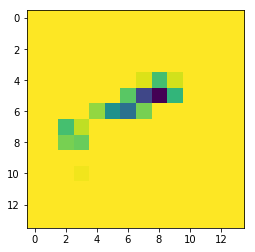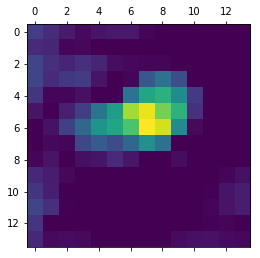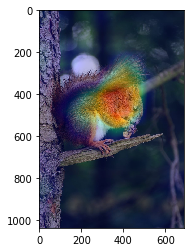Heatmaps for CNNs with Grad-CAM process
Import required libraries
from tensorflow.keras.preprocessing import image
from tensorflow.keras.applications.vgg16 import preprocess_input, decode_predictions
import numpy as np
import os
import matplotlib.pyplot as plt
List all images
img_path = './images/'
images = sorted(os.listdir(img_path))
images = [img_path + img for img in images]
images
['./images/img1.jpg',
'./images/img10.jpg',
'./images/img2.jpg',
'./images/img3.jpg',
'./images/img4.jpg',
'./images/img5.jpg',
'./images/img6.jpg',
'./images/img7.jpg',
'./images/img8.jpg',
'./images/img9.jpg',
'./images/output_with_heatmap.jpg']
Import VGG16 model
from tensorflow.keras.applications.vgg16 import VGG16
model = VGG16(weights='imagenet')
Preview sample image
image_to_load = images[5]
img = image.load_img(image_to_load, target_size=(224,224))
x = image.img_to_array(img)
plt.imshow(np.int32(x))
<matplotlib.image.AxesImage at 0x7f9f96935d30>

Preprocess input to be compatibile with VGG16 model (e.g. substract mean and divide by standard deviation)
x = np.expand_dims(x, axis=0)
x = preprocess_input(x)
Predict what is on the picture using the model
preds = model.predict(x)
prediction = decode_predictions(preds, top=1)[0][0]
print('Predicted: ', prediction[1], ' with probability ', prediction[2], '%', sep='')
print('Top 3 predictions:')
print(decode_predictions(preds, top=3)[0])
Predicted: fox_squirrel with probability 0.9221031%
Top 3 predictions:
[('n02356798', 'fox_squirrel', 0.9221031), ('n02441942', 'weasel', 0.02617497), ('n02442845', 'mink', 0.025668971)]
Get index of the prediction in one-hot encoded output array
max_ind = np.argmax(preds[0])
preds[:,max_ind]
array([0.9221031], dtype=float32)
Print out the model summary
model.summary()
_________________________________________________________________
Layer (type) Output Shape Param #
=================================================================
input_1 (InputLayer) (None, 224, 224, 3) 0
_________________________________________________________________
block1_conv1 (Conv2D) (None, 224, 224, 64) 1792
_________________________________________________________________
block1_conv2 (Conv2D) (None, 224, 224, 64) 36928
_________________________________________________________________
block1_pool (MaxPooling2D) (None, 112, 112, 64) 0
_________________________________________________________________
block2_conv1 (Conv2D) (None, 112, 112, 128) 73856
_________________________________________________________________
block2_conv2 (Conv2D) (None, 112, 112, 128) 147584
_________________________________________________________________
block2_pool (MaxPooling2D) (None, 56, 56, 128) 0
_________________________________________________________________
block3_conv1 (Conv2D) (None, 56, 56, 256) 295168
_________________________________________________________________
block3_conv2 (Conv2D) (None, 56, 56, 256) 590080
_________________________________________________________________
block3_conv3 (Conv2D) (None, 56, 56, 256) 590080
_________________________________________________________________
block3_pool (MaxPooling2D) (None, 28, 28, 256) 0
_________________________________________________________________
block4_conv1 (Conv2D) (None, 28, 28, 512) 1180160
_________________________________________________________________
block4_conv2 (Conv2D) (None, 28, 28, 512) 2359808
_________________________________________________________________
block4_conv3 (Conv2D) (None, 28, 28, 512) 2359808
_________________________________________________________________
block4_pool (MaxPooling2D) (None, 14, 14, 512) 0
_________________________________________________________________
block5_conv1 (Conv2D) (None, 14, 14, 512) 2359808
_________________________________________________________________
block5_conv2 (Conv2D) (None, 14, 14, 512) 2359808
_________________________________________________________________
block5_conv3 (Conv2D) (None, 14, 14, 512) 2359808
_________________________________________________________________
block5_pool (MaxPooling2D) (None, 7, 7, 512) 0
_________________________________________________________________
flatten (Flatten) (None, 25088) 0
_________________________________________________________________
fc1 (Dense) (None, 4096) 102764544
_________________________________________________________________
fc2 (Dense) (None, 4096) 16781312
_________________________________________________________________
predictions (Dense) (None, 1000) 4097000
=================================================================
Total params: 138,357,544
Trainable params: 138,357,544
Non-trainable params: 0
_________________________________________________________________
Print out layer names
[layer.name for layer in model.layers]
['input_1',
'block1_conv1',
'block1_conv2',
'block1_pool',
'block2_conv1',
'block2_conv2',
'block2_pool',
'block3_conv1',
'block3_conv2',
'block3_conv3',
'block3_pool',
'block4_conv1',
'block4_conv2',
'block4_conv3',
'block4_pool',
'block5_conv1',
'block5_conv2',
'block5_conv3',
'block5_pool',
'flatten',
'fc1',
'fc2',
'predictions']
Save last convolutional layer to variable
last_conv_layer = model.get_layer('block5_conv3')
Import keras backend for operations needed to perform Grad-CAM process
import tensorflow.keras.backend as K
Get output tensor for predicted class from model output
model_output = model.output[:, max_ind]
Compute gradients of predicted class with regard to the output feature map of last convolution layer
grads = K.gradients(model_output, last_conv_layer.output)[0]
print(grads)
Tensor("gradients/block5_pool/MaxPool_grad/MaxPoolGrad:0", shape=(?, 14, 14, 512), dtype=float32)
It can be interpreted as 512 filters or features with size 14 by 14 pixels
Average all values from each filter together. Now each entry corresponds to mean intensity of the gradient over a specific feature map channel.
In other words, every 14x14 filter will be now aweraged to single value.
pooled_grads = K.mean(grads, axis=(0,1,2))
print(pooled_grads)
Tensor("Mean:0", shape=(512,), dtype=float32)
https://www.tensorflow.org/api_docs/python/tf/keras/backend/function “Function” lets us get custom tensors from the model. We don’t want the model’s final output but output from last convolution layer and pooled_grads.
We can do that by passing to this function our model input tensor and array of our outputs which will be evaluated after calling this function.
iterate = K.function([model.input], [pooled_grads, last_conv_layer.output[0]])
pooled_grads_value, conv_layer_output_value = iterate([x])
Print out output from one of the 512 filters in last convolution layer:
plt.imshow(conv_layer_output_value[:,:,10])
<matplotlib.image.AxesImage at 0x7f9f947c8898>

Multiply each channel in the feature map array with averaged gradient values corresponding to that channel. This resembles how important this channel is with regards to predicted class.
for i in range(512):
conv_layer_output_value[:, :, i] *= pooled_grads_value[i]
Print out the same convolution layer channel output after scalling with pooled gradients:
plt.imshow(conv_layer_output_value[:,:,10])
<matplotlib.image.AxesImage at 0x7f9f94789d30>

Create the heatmap
conv_layer_output_value.shape
(14, 14, 512)
Merge all 512 channels together by averaging all their pixel values:
heatmap = np.mean(conv_layer_output_value, axis=-1)
heatmap.shape
(14, 14)
Scale and plot the heatmap
heatmap = np.maximum(heatmap, 0)
heatmap /= np.max(heatmap)
plt.matshow(heatmap)
<matplotlib.image.AxesImage at 0x7f9f94750390>

Import OpenCV to easily blend heatmap with original image
import cv2
Save the image with heatmap applied
img_cv = cv2.imread(image_to_load)
heatmap = cv2.resize(heatmap, (img_cv.shape[1], img_cv.shape[0]))
heatmap = np.uint8(255 * heatmap)
heatmap = cv2.applyColorMap(heatmap, cv2.COLORMAP_JET)
superimposed_img = heatmap * 0.4 + img_cv
cv2.imwrite('./images/output_with_heatmap.jpg', superimposed_img)
True
Scale and plot the results in the notebook:
max_val = superimposed_img.max()
# superimposed_img[...,::-1] is the trick to convert
# opencv's BGR to matplotlib's RGB color channels
plt.imshow(np.int32(superimposed_img[...,::-1]/max_val*255))
<matplotlib.image.AxesImage at 0x7f9f946ec198>

This experiment was made after reading Deep Learning with Python by Francois Chollet. I strongly recomment this book to everyone interested in python, deep learning, tensorflow and keras.
Github URL:
